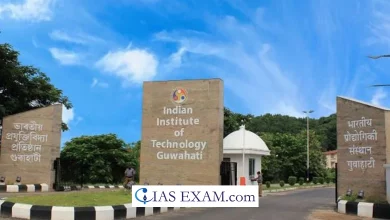Streamlining of Green Credit Program for Ecosystem Restoration
Syllabus: Ecology and Environment [GS Paper -3]

Context
Recently, the central govt. Initiated amendments in the green Credit Programme to Streamline the Green Credit Program for Ecosystem Restoration over potential misalignment with the objectives of Environment Conservation.
Key Highlights
- Ecosystem Focus: It is transformational in that the programme now leans more towards ecosystem restoration, placing emphasis on the replenishment of ruined forestry plains rather than on mere tree planting in line with the themes of ecological conservation.
- State Participation: Thirteen states are very active in the initiative, to fight with 387 land parcels that come to about 10,983 hectares through restoration. With this, the states are showing a very high level of engagement on this program.
- Stakeholder Engagement: Citizens and groups may surpass the efforts in a financial way by organising under the Indian Council of Forestry Research and Education (ICFRE). The combined force will provide a supportive environment for ecosystem restoration.
- Green Credits Mechanism: Those ‘green credits’ are the system that for each tree planted, the ICFRE should evaluate it after two years for only one credit to be given to the restoration activities so the forest can be tracked and incentivized.
- Utilisation of Green Credits: This fixture can be utilised, for example, as compliance data or corporate social responsibility paperwork obligations which will be of both practical and environmental value.
Detailed analysis of the Green Credit Program and Ecosystem Restoration
- Prioritising Ecosystem Rehabilitation:
- The amendments emphasise reviving damaged ecosystems, which are not only confined to basic planting of trees.
- The main responsibility of national forest departments is implementing the establishment of plantations while taking into account the multilateral character of such a project to ensure that it is suitable for the local area.
- Corporate Engagement in Environmental Responsibility:
- The scheme helps to create a legal environment where companies are to follow the principle of compensatory afforestation together with the incorporation of eco-friendly principles in corporate governance.
- Green credits offer firms with the way to satisfy CSR requirements, to support sustainable business operations.
- Flexible Restoration Guidelines:
- The present program allows states to be flexible regarding their restoration strategies because they can vary them, depending on each unique ecological context.
- The restoration techniques adapt an array of vegetation types such as bushes and grasses for different ecological conditions available.
- Clarification of Restoration Objectives:
- The emphasis is on the running down of ecosystem restoration and wise system complexity rather than tree planting, especially.
- Delegating afforestation tasks to local authorities allows for efficient management and for expertise specifically related to the local restoration.
- Collaborative Environmental Efforts:
- The program facilitates alignment of corporate interests with government agencies that take advantage of resources and capabilities to achieve effective ecosystem restoration.
- Commitment to CSR principles not only fosters the responsibility but also aims at an innovative way for environmental conservation.
Summary of Amendments and reasons in brief
- Amendments let anyone and organisations get involved in forest restoration through Indian Council of Forestry Research and Education (ICFRE).
- The responsibility for afforestation under such initiative will be executed by respective forest departments in each State, cutting potential trees to earn ICFRE one green credit after two years.
- Credits can be accumulated to satisfy forest regulation requirements and used for environmental, social, and governance reporting as well as corporate social responsibility (CSR).
- The major motivation behind the Green Credit Programme (GCP) is to implement tree planting for monetary advancement which has made the Union Environment Ministry to highlight the need to emphasise ecosystem restoration.
- Thirteen states have already declared 387 pieces of land measuring 10,983 hectares for recovery.
Conclusion
The Green Credit Programme aims to replenish natural habitats, not just tree plantation. Thirteen states will provide 10,983 hectares of land for restoration, with stakeholders like individuals and organisations contributing to the Indian Forest Research and Education Council. The amendments promote comprehensive conservation.
Source: The Hindu
UPSC Mains Practice Question
Q.Discuss the significance of the recent amendments to the Green Credit Program for Ecosystem Restoration in India. How do these amendments align with broader environmental conservation objectives? Explain with relevant examples and considerations.





.png)



